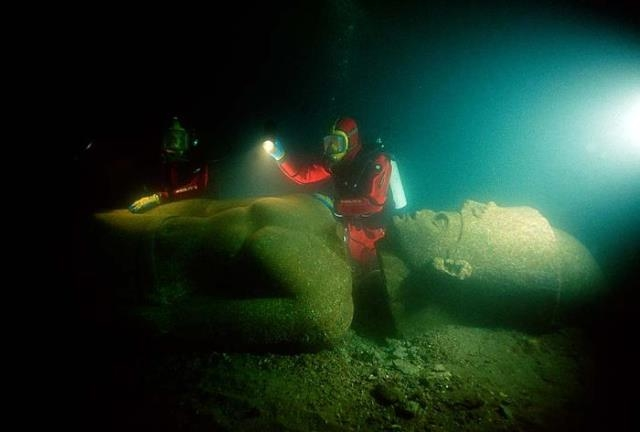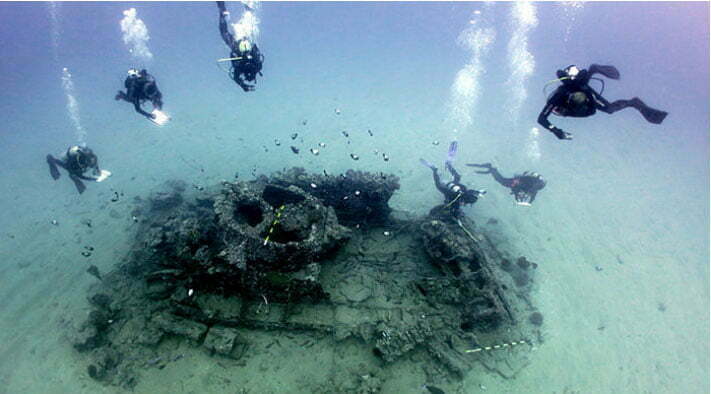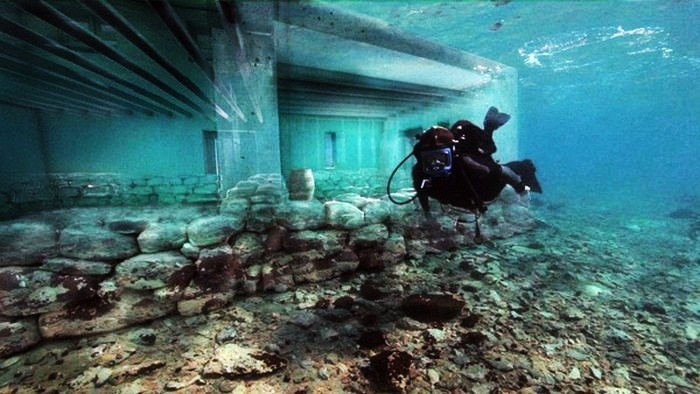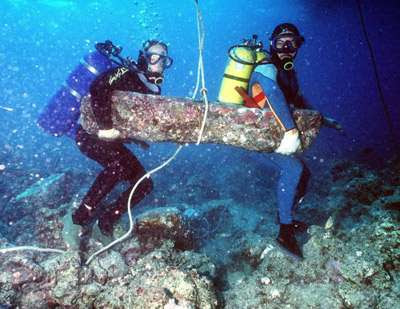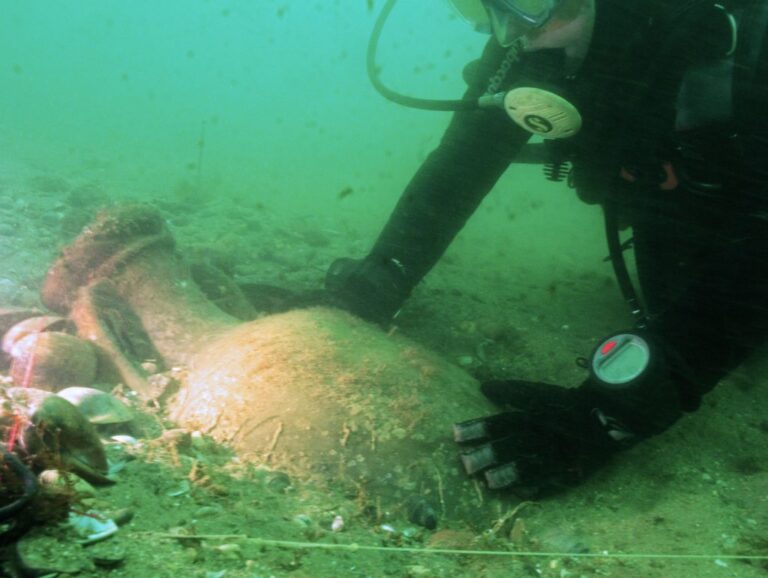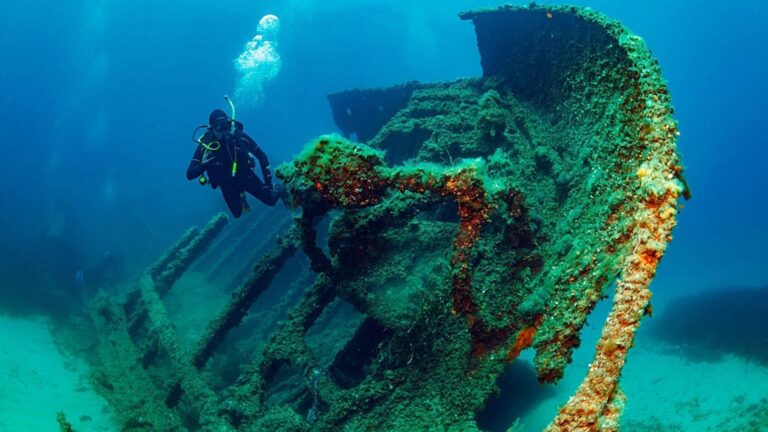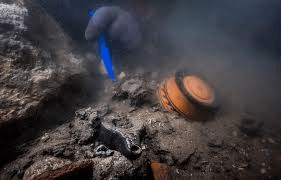Underwater Archaeology and the Fascinating Discoveries in the Waters
Underwater archaeology is a captivating field that explores the wonders hidden in the depths of our waters. By studying submerged cultural heritage, researchers can unlock the mysteries of our past and gain invaluable insights into ancient civilizations and their interactions with the maritime world.
The significance of studying submerged cultural heritage cannot be overstated. These underwater sites hold a wealth of information that can enhance our understanding of human history. By examining the remains of shipwrecks, ancient cities, and artifacts found underwater, archaeologists can piece together the stories of bygone eras and shed light on the lives of those who came before us.
Moreover, submerged cultural heritage provides a unique perspective on maritime trade and navigation, offering glimpses into ancient trading routes, cultural exchange, and navigation techniques. Understanding these aspects of our past not only enriches our knowledge but also provides context for the present and future.
Through the remarkable discoveries made underwater, we have been able to uncover hidden treasures that were once lost to the depths. Shipwrecks like the Titanic and the Vasa have fascinated the world with their tales of tragedy and triumph. Ancient submerged cities, such as Pompeii and Dwarka, have revealed the grandeur of past civilizations and the impact of natural disasters. And artifacts like the Antikythera mechanism have provided invaluable insights into ancient technology and scientific advancements.
However, studying submerged cultural heritage is not without its challenges. Limited funding and conservation issues pose significant obstacles to archaeological exploration underwater. It is crucial that we recognize the importance of preserving these underwater sites as they hold irreplaceable historical and cultural value.
Advancements in technology continue to revolutionize the field of underwater archaeology, offering exciting opportunities for future discoveries. Remote operated vehicles (ROVs) and sonar systems allow researchers to explore deeper and more difficult-to-reach locations, while emerging technologies promise to further enhance our ability to extract and preserve information from underwater sites.
In conclusion, underwater archaeology and the fascinating discoveries in the waters offer a unique window into our past. By studying submerged cultural heritage, we can gain a deeper understanding of ancient civilizations, maritime trade, and navigation techniques. It is imperative that we support and appreciate the efforts of underwater archaeologists in preserving and uncovering these hidden treasures, for they hold the key to unlocking the mysteries of our shared history.
Table of Contents
The History of Underwater Archaeology
Underwater archaeology is a captivating and rapidly evolving field that brings to the surface fragments of our ancient past that have been hidden beneath the waters for centuries. Its origins can be traced back to the late 19th century, when the invention of the diving helmet and improvements in underwater breathing apparatus allowed explorers to venture deeper into the oceans.
One of the key milestones in underwater archaeology was the discovery of the submerged city of Alexandria, Egypt by French marine archaeologist, Franck Goddio, in 1996. This remarkable find revealed a wealth of knowledge about the ancient civilizations that once thrived on the banks of the Nile and their relationship with the sea. It was the beginning of a new era for underwater archaeology, opening the floodgates to a myriad of fascinating discoveries.
Advancements in technology have played a crucial role in revolutionizing the field. The introduction of sophisticated underwater surveying techniques and mapping tools, such as side-scan sonar and magnetometers, has made it possible to identify potential archaeological sites beneath the waves with great accuracy. These technological advancements have significantly increased the efficiency and precision of underwater excavations, allowing researchers to explore larger areas and uncover more treasures.
Another major breakthrough has been the integration of robotics into underwater archaeology. Remotely operated vehicles (ROVs) equipped with cameras and robotic arms are now used extensively in archaeological excavations, enabling researchers to reach depths and explore intricate underwater structures that were once inaccessible. These technological marvels have not only improved the safety of underwater excavations but have also provided a means to meticulously document and preserve the fragile underwater heritage.
In addition to technological advancements, the collaboration between maritime archaeologists and divers has been instrumental in pushing the boundaries of underwater archaeology. Divers play a crucial role in underwater excavations, as they are able to physically interact with the archaeological remains and collect valuable data and artifacts. Their intimate knowledge of underwater environments and expert diving skills are invaluable in uncovering submerged cultural heritage.
**The history of underwater archaeology is a testament to the perseverance, dedication, and innovation of the researchers who are committed to unraveling the mysteries of the deep. Milestone discoveries and advancements in technology have transformed the field, allowing us to piece together the puzzle of our rich and diverse past in ways that were once unimaginable. As technology continues to advance, the future of underwater archaeology holds great promise for even more astonishing discoveries and a deeper understanding of our shared history.
Techniques and Tools Used in Underwater Archaeology
Underwater archaeology is a fascinating field that relies on a variety of techniques and tools to uncover the secrets hidden beneath the waters. Excavating submerged archaeological sites requires specialized methods that take into account the unique challenges posed by underwater environments.
One of the most commonly used techniques in underwater archaeology is remote sensing. This involves using sonar systems to create detailed maps of the ocean floor, allowing archaeologists to identify potential sites of interest. Sonar technology can also be used to locate shipwrecks and submerged structures without the need for physical excavation.
Once a potential site has been identified, excavation methods are employed to uncover and retrieve artifacts. These methods include geophysical surveys, where underwater archaeologists use tools like magnetometers and sub-bottom profilers to gain a better understanding of the site’s layout and composition.
To physically excavate underwater sites, archaeologists use divers who play a crucial role in the process. Divers use a variety of tools and equipment such as underwater metal detectors, underwater cameras, and remotely operated vehicles (ROVs). ROVs are particularly useful for exploring deeper areas that are difficult for divers to reach. They are equipped with high-resolution cameras and robotic arms, allowing archaeologists to remotely collect data and recover artifacts.
In addition to these tools and techniques, underwater archaeologists employ a range of documentation methods to record and analyze their findings. These include photogrammetry, where photographs of an underwater site are used to create 3D models, and video documentation, which captures the excavation process for further analysis.
Overall, the combination of remote sensing technology, excavation methods, and the essential participation of divers and ROVs allows underwater archaeologists to explore and uncover the mysteries of submerged cultural heritage. It is through these techniques and tools that we are able to piece together the stories of our past and gain a deeper understanding of our maritime history.
Remarkable Discoveries in the Depths
Underwater archaeology has uncovered a wealth of captivating and fascinating discoveries in the depths of our oceans and seas. These remarkable findings shed light on ancient civilizations and provide invaluable insights into our history. From famous shipwrecks to ancient submerged cities and intriguing artifacts, the underwater world has become a treasure trove of knowledge.
One of the most famous shipwrecks that has captured the imagination of people around the world is the Titanic. Discovered in 1985, this tragic relic of maritime history lies at the bottom of the North Atlantic Ocean. The discovery of the Titanic allowed archaeologists to piece together the events leading up to its sinking and provided a somber reminder of the human lives lost on that fateful night.
Another renowned shipwreck is the Vasa, a 17th-century warship that sank on its maiden voyage in Stockholm, Sweden. Discovered in 1956, the remarkably well-preserved Vasa has provided archaeologists with invaluable information about naval warfare, shipbuilding techniques, and daily life during the time period. It stands as a testament to the rich maritime history of the region.
In addition to shipwrecks, underwater archaeology has also revealed fascinating ancient submerged cities. One of the most famous examples is Pompeii, which was buried beneath layers of volcanic ash and debris after the eruption of Mount Vesuvius in 79 AD. The underwater excavations of Pompeii have brought to the surface well-preserved artifacts, statues, and mosaics, providing invaluable insights into daily life in ancient Rome.
Another mesmerizing submerged city is Dwarka, located off the coast of Gujarat, India. According to ancient Hindu texts, Dwarka was once the capital of Lord Krishna’s kingdom. Archaeological investigations have revealed extensive structures, walls, and artifacts that suggest an advanced civilization thriving in the area thousands of years ago. These discoveries have sparked debates and discussions about ancient legends and historical events.
Among the intriguing artifacts recovered from the depths, one of the most notable is the Antikythera mechanism. Discovered in a shipwreck near the Greek island of Antikythera, this ancient mechanical device is believed to be an early analog computer. It demonstrates the advanced technological capabilities of the ancient Greeks and provides remarkable insights into their knowledge of astronomy and mathematics.
These captivating discoveries in the depths of the ocean highlight the importance of underwater archaeology in unraveling our past. Each shipwreck, city, and artifact tells its own unique story and contributes to our understanding of ancient civilizations and their achievements. Through meticulous excavation and preservation efforts, underwater archaeologists ensure that these submerged cultural heritage sites are protected for future generations to explore and learn from.
Studying Maritime Trade and Navigation
Underwater archaeology plays a crucial role in understanding the complex history of ancient maritime trade routes. By investigating submerged shipwrecks and artifacts, archaeologists can piece together valuable information about the routes used by ancient civilizations for trading and cultural exchange.
The evidence uncovered through underwater excavations reveals fascinating insights into long-distance trade and the extent of cultural exchange that occurred thousands of years ago. By studying the goods and materials discovered in these underwater sites, archaeologists can trace the trade routes that connected civilizations across vast distances.
Moreover, these underwater discoveries have significantly enhanced our knowledge of ancient navigation techniques. By examining the design and construction techniques of sunken ships, archaeologists can gain valuable insights into the methods used for traversing the seas in ancient times. This knowledge not only sheds light on the technological advancements of past civilizations but also allows us to appreciate the challenges they faced in navigating the treacherous waters.
The impact of underwater discoveries on our understanding of ancient navigation and maritime trade cannot be overstated. These findings have not only enriched our understanding of history but have also sparked new questions and avenues of research. By continually pushing the boundaries of technology and methodology, underwater archaeologists are poised to make even more exciting discoveries in the future, further unraveling the mysteries of ancient maritime trade and navigation.
In conclusion, underwater archaeology plays a pivotal role in unraveling the secrets of ancient maritime trade routes and navigation techniques. Through the investigation of submerged shipwrecks and artifacts, archaeologists can piece together the intricate puzzle of cultural exchange and trace the routes used for long-distance trade. These discoveries not only deepen our understanding of history but also inspire us to appreciate the wonders of our past and the importance of preserving our underwater cultural heritage.,Challenges and Future Directions
Underwater archaeology, despite its allure and potential for uncovering ancient secrets, faces several challenges that hinder its progress. One of the primary obstacles is limited funding. Conducting thorough expeditions and excavations underwater requires significant financial resources. The costs involved in acquiring specialized equipment, organizing research teams, and maintaining conservation efforts can be overwhelming. A lack of funding can restrict the scope and duration of underwater archaeological projects, limiting the discoveries and knowledge that can be gained.
Another challenge that underwater archaeologists face is the issue of conservation. The preservation of underwater cultural heritage is crucial, as these submerged sites are susceptible to deterioration and damage caused by natural processes, such as corrosion and erosion, as well as human intervention. However, underwater sites often lack the same level of legal protection and awareness as their terrestrial counterparts. Relatively little has been done to safeguard these invaluable historical resources and prevent looting or destruction. Effective conservation measures are necessary to ensure the preservation and accessibility of underwater cultural heritage for future generations.
Despite these obstacles, there are emerging technologies and methodologies that promise exciting future discoveries in underwater archaeology. With advancements in imaging and remote sensing technologies, underwater archaeologists can now explore and survey larger areas more efficiently. The use of high-resolution sonar systems and remotely operated vehicles (ROVs) allows for precise mapping of underwater sites and the identification of potential archaeological structures. Additionally, advances in diving technology and underwater excavation techniques enable archaeologists to work at greater depths and for longer periods. These innovations have the potential to revolutionize underwater archaeology and uncover previously inaccessible submerged cultural heritage.
In conclusion, underwater archaeology faces challenges related to limited funding and the conservation of underwater cultural heritage. However, the significance of preserving and studying these submerged sites cannot be overstated. The underwater realm holds a wealth of untold stories and knowledge about our past, and it is essential to ensure its protection and accessibility. With emerging technologies and methodologies, there is great potential for exciting future discoveries in underwater archaeology. By supporting and investing in this field, we can continue to unravel the mysteries hidden beneath the waters and gain a deeper understanding of our collective history.
Conclusion
In conclusion, underwater archaeology is a fascinating field that allows us to explore and uncover the hidden secrets of our past. Through the exploration of submerged cultural heritage, we are able to gain valuable insights into the history of human civilization and the significance of studying underwater archaeology cannot be overstated.
By studying submerged cultural heritage, we are able to understand and appreciate ancient cultures and their contributions to our modern world. The discoveries made in the depths of the waters provide us with a unique perspective on the past, showcasing the ingenuity, craftsmanship, and societal structures of ancient civilizations.
Furthermore, underwater archaeology plays a crucial role in preserving and conserving our underwater cultural heritage. As technology continues to advance, we are faced with new challenges such as limited funding and conservation issues. However, by understanding the importance of underwater cultural heritage, we can work towards ensuring its preservation for future generations.
Lastly, the wonders and importance of studying submerged cultural heritage must be appreciated and recognized. These underwater discoveries contribute to our understanding of maritime trade and navigation, as well as long-distance cultural exchanges. By uncovering ancient trade routes and navigation techniques, we are able to piece together the puzzle of our history and gain a deeper appreciation for the interconnectedness of civilizations.
In conclusion, underwater archaeology opens up a world of possibilities and allows us to unravel the mysteries of our past. It is through the exploration of submerged cultural heritage that we can truly appreciate the wonders of our world and the importance of studying and preserving these invaluable remnants of our history.

